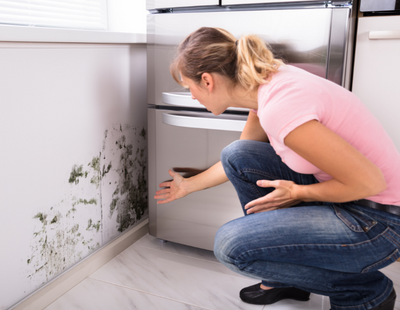
As the energy crisis gather pace, households are increasingly likely to be in the position where they are unable to afford to properly heat their homes this winter.
The Government’s latest annual fuel poverty statistics for England found that in 2020 there were an estimated 13.2% of households (3.16 million) in fuel poverty in England. According to the End Fuel Poverty Coalition, from 1 October 2022, there are now an estimated 7 million households in fuel poverty and this could rise to 7.8 million from spring 2023.
Not only can lack of heating lead to discomfort and potential ill health, but it can also lead to increased condensation and mould, which can further contribute to health issues.
In social housing and private RMI there is also a growing issue with homes that have been insulated to make them more energy efficient but have not had adequate ventilation installed too. When this is combined with rising fuel bills, and inadequate heating the issue of condensation and mould is only set to worsen.
Landlords should therefore be looking for energy efficient ventilation that can adequately ventilate properties and deal with condensation and mould.
Fortunately, future retrofits fall under the new Building Regulations which require ventilation to be improved if energy efficiency measures are added.
Under Part F of the Building Regulations, when installing energy efficiency measures in existing properties, an assessment should determine what, if any, additional ventilation provision is needed, based on the estimated impact of the work. This will help to tackle condensation, mould and poor indoor air quality caused when moisture is unable to escape.
The knock-on effects of the energy crisis should not be underestimated. Not only are people facing a very cold winter in their homes but, without effective ventilation, condensation and mould rates could soar.
Not only is this unsightly and unpleasant to live with, it can cause major health issues – especially for those with existing respiratory and immunity disorders, such as asthma. By ensuring properties have effective, energy efficient ventilation, landlords are not only meeting their duty of care to provide a habitable dwelling, they are also protecting their housing stock from damage to the fabric of the buildings that can be caused by condensation and mould.
*Natasha King is RMI Product Manager at Vent-Axia.
Want to comment on this story? Our focus is on providing a platform for you to share your insights and views and we welcome contributions.
If any post is considered to victimise, harass, degrade or intimidate an individual or group of individuals, then the post may be deleted and the individual immediately banned from posting in future.
Please help us by reporting comments you consider to be unduly offensive so we can review and take action if necessary. Thank you.
















.png)





Join the conversation
Jump to latest comment and add your reply
If tenants won't heat and ventilate their homes they'll get mould, I've been fitting slow running constant extractor fans to landings and hall ways, and more powerful extractor fans with longer over runs to bathrooms with lockable isolating switches, this certainly helps a lot
I find good quality anti-mould paint brilliant, £65, for 5 litres it discourages mould growth you can wash, scrub and it’s still there like new, rubbish paint leave it in the Shop. I have
done insulated plastered internally of outside walls eliminates mould but expensive and difficult to achieve property needs to be vacant, we know it’s the hot air / steam hitting the cold surface condensates.
Tenant behaviour causes mould.
The same property has had around 20 tenants, two of which have had mould problems and the majority haven't. If I see mould or get complaints I go in with HG Mould cleaner and an article on how to avoid mould.
I haven't found it necessary to spend money on anything else so far.
I agree it is tenant behaviour that causes the mould, but try telling them that, or anyone else, it's always the same '' your house is damp mate''. I have a very old detached property , EPC F with an exception, had many tenants complain that it's damp, last 5 yrs 2 older guys living there and no damp issues, when ever I drive past in day light bedroom windows open, summer and winter, there's your answer
Andrew
That's why I give them the article printed from the internet - can't remember exactly where it came from initially - but I also remind them that 90% of the previous tenants didn't have a mould problem and they're free to leave any time on 4 weeks notice under the SNP legislation.
They know full well how difficult it would be to get the same quality of property at the current (frozen) rent!
Basically you should have forced ventilation in the bathroom and kitchen. Unfortunately the tenants switch them off
I am aware of an area in Walsall housing Kurds who have heat exchangers In the loft to remove heat from extracted air and heat up the new fresh air. Unfortunately the tenants used to go into the loft and switch them off.
The problem is with all this ventilation is great for Covid prevention but it will also tend to extract a lot of heat making the place feel cold just a thought.
Please login to comment